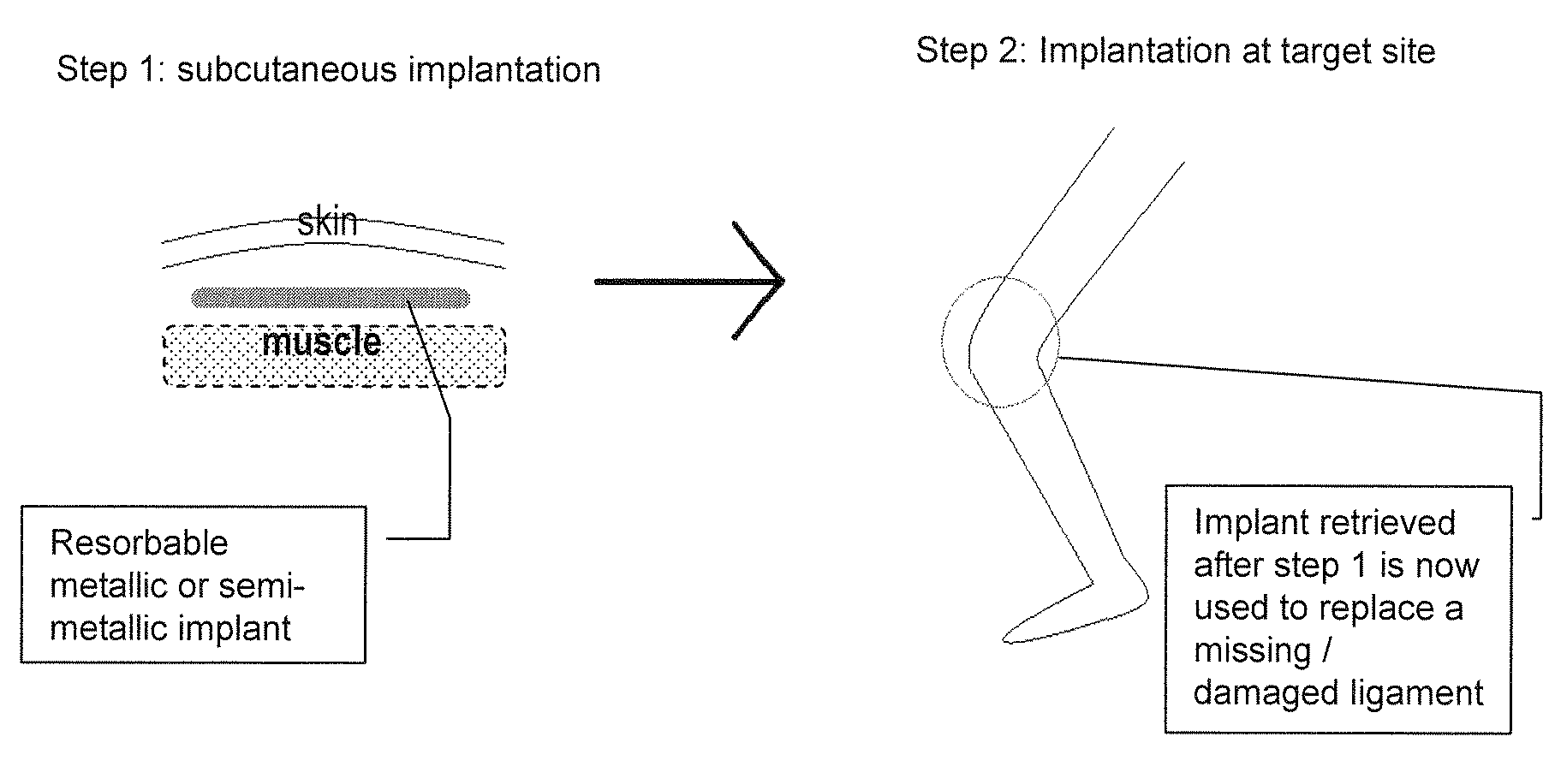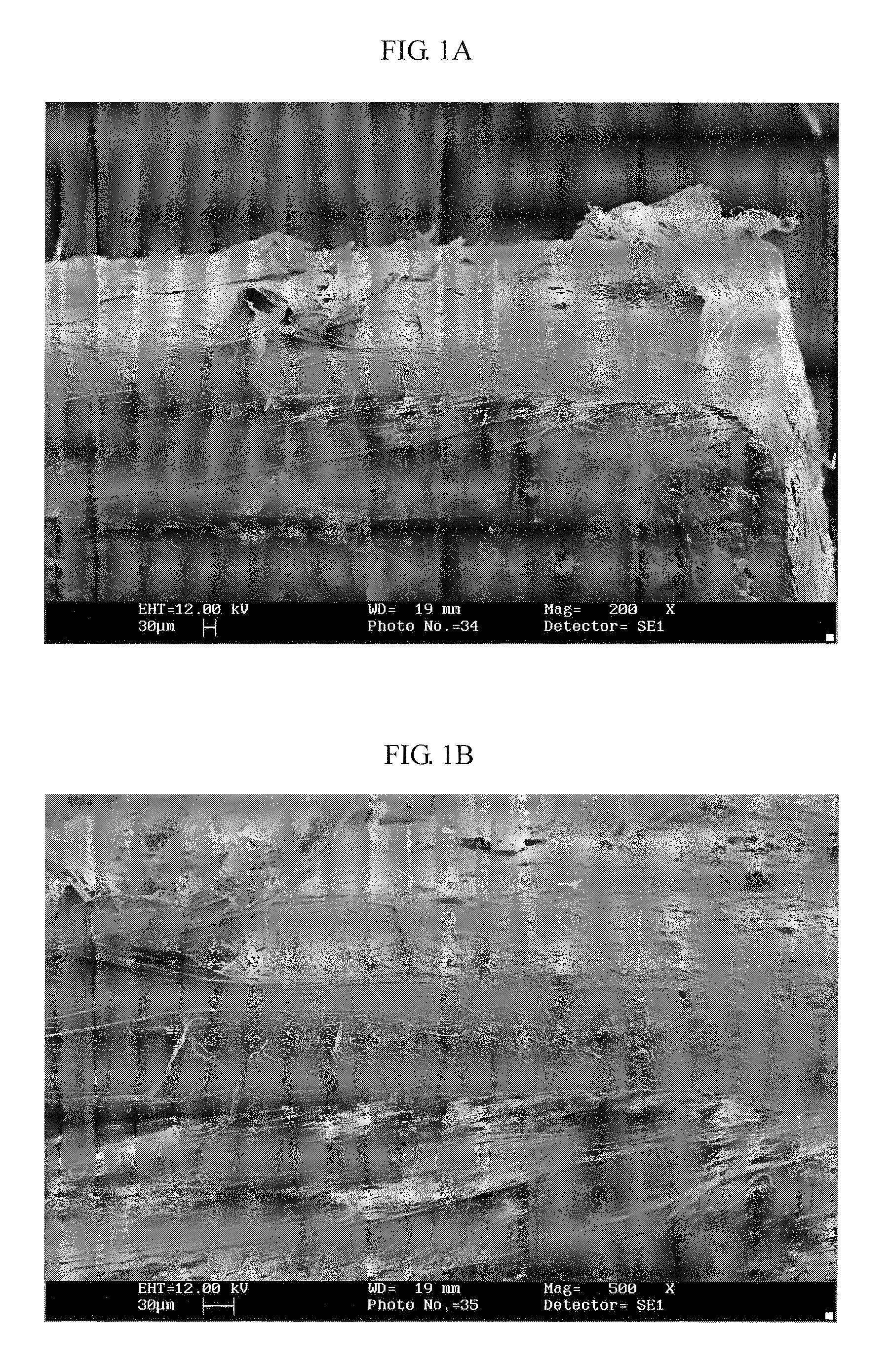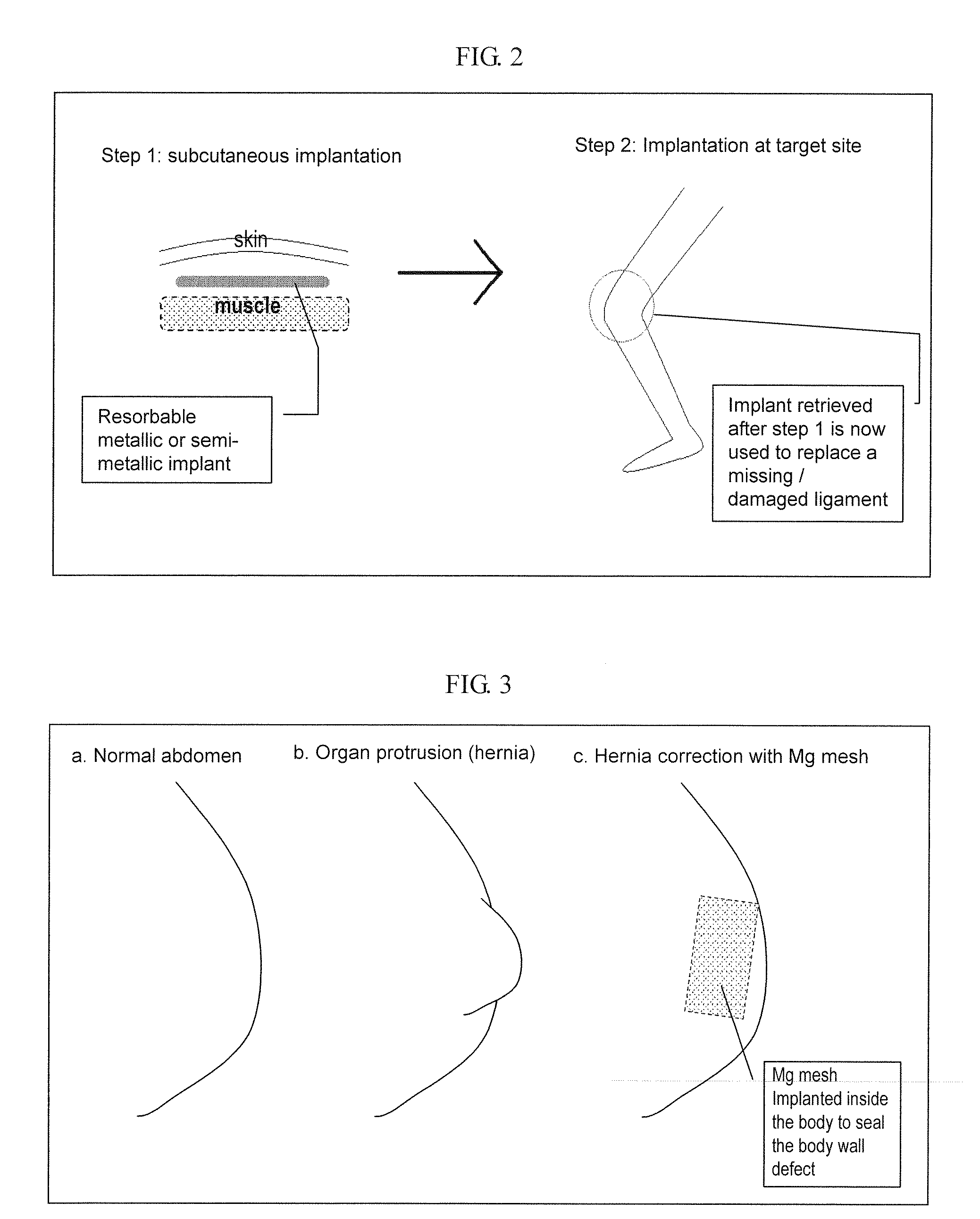Implant for Tissue Engineering
a tissue engineering and implant technology, applied in the field of tissue engineering implants, can solve the problems of plasticizers harmful to the body being released from implants, polymer use in implants, and the mechanical properties of polymers are often unsatisfactory
- Summary
- Abstract
- Description
- Claims
- Application Information
AI Technical Summary
Benefits of technology
Problems solved by technology
Method used
Image
Examples
example 1
[0065]Lathed AM60B magnesium alloy wire, diameter 0.5 mm and length 30 mm, polished and immersed into 12M sodium hydroxide solution for 10 minutes, is further immersed into sterile DMEM for 1 hour. The material is then implanted subcutaneously for 30 days, retrieved, and implanted into a ligament defect site to replace or reinforce a broken ligament.
example 2
[0066]Extruded AM50A magnesium alloy wire, diameter 0.3 mm and length 100 mm, folded at the mid-point and then folded again at the new mid-point resulting in a new length of 50 mm, polished and immersed into 12M sodium hydroxide solution for 10 minutes, is further immersed into sterile DMEM for 1 hour. The material is then implanted subcutaneously for 30 days, retrieved, and implanted into a ligament defect site to replace or reinforce a broken ligament.
example 3
[0067]99.99% pure magnesium mesh, size 80 mm by 80 mm, immersed into 12M sodium hydroxide solution for 1 minute, is further immersed into sterile phosphate-buffered saline for 1 hour. The material is then implanted into the body to seal the body wall defect which causes organ protrusion at the abdomen.
PUM
 Login to View More
Login to View More Abstract
Description
Claims
Application Information
 Login to View More
Login to View More - R&D
- Intellectual Property
- Life Sciences
- Materials
- Tech Scout
- Unparalleled Data Quality
- Higher Quality Content
- 60% Fewer Hallucinations
Browse by: Latest US Patents, China's latest patents, Technical Efficacy Thesaurus, Application Domain, Technology Topic, Popular Technical Reports.
© 2025 PatSnap. All rights reserved.Legal|Privacy policy|Modern Slavery Act Transparency Statement|Sitemap|About US| Contact US: help@patsnap.com



